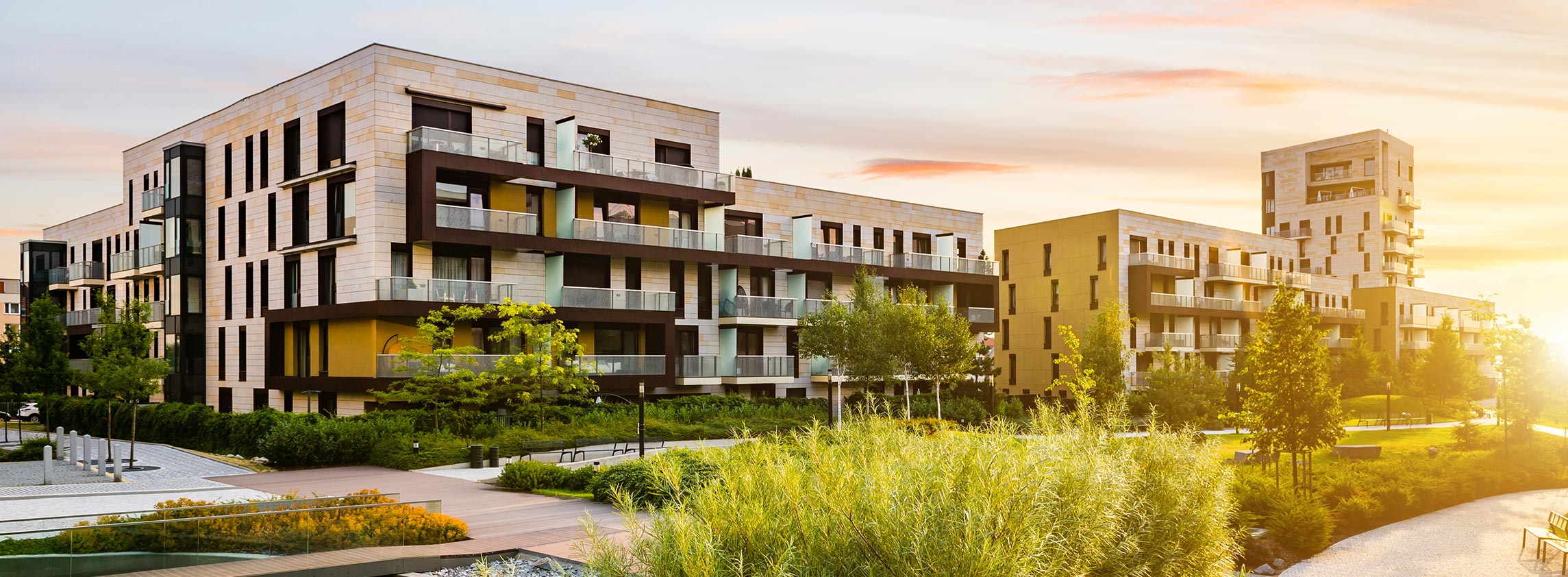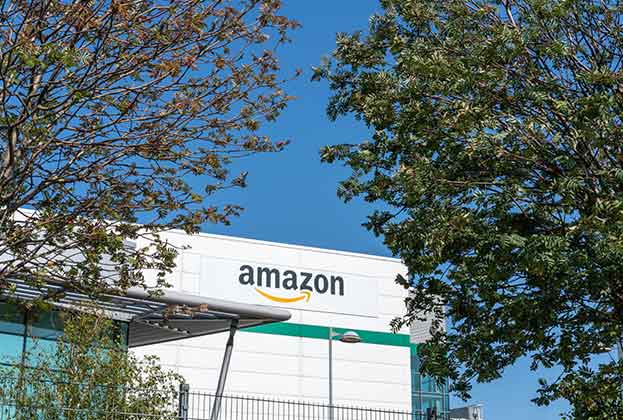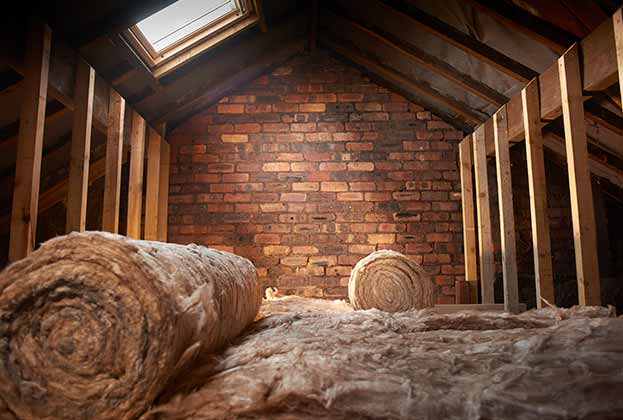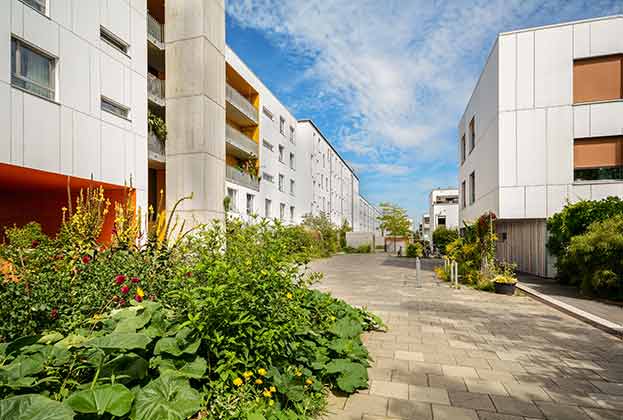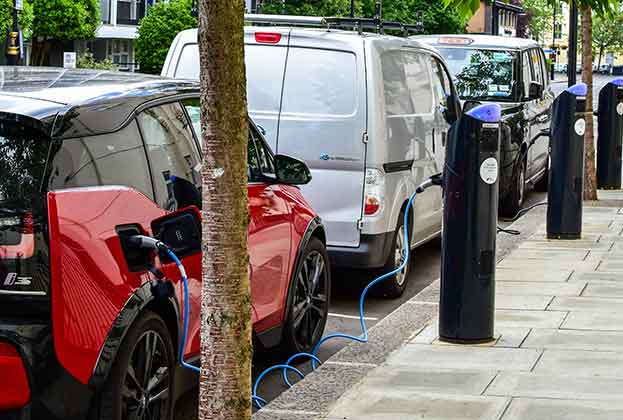There are two key areas for all real estate sectors to focus on when it comes to managing their operational carbon
Perhaps the most obvious is to remove fossil fuels as a source of energy and only use renewable energy sources. However, grid capacity is stretched, so improving the energy efficiency of buildings to reduce energy consumption is also necessary. Each real estate sector has unique challenges.
Offices
New offices are arguably the most advanced part of the built environment as providers of this accommodation have been adhering to global sustainability standards such as BREEAM or LEED for decades. High levels of redevelopment in central business district markets means that historic office stock is being upgraded more quickly to the latest ESG standards than other parts of the property market.
However, the operation of offices continues to be a significant source of carbon emissions with the temperature in offices controlled all year; warmed in winter and over chilled in summer. This is changing and the latest British Council for Offices Guide to Specification (2019) has suggested that standard operating temperatures should be revised upwards from 22°c to 24°c in summer (+/- 2 degrees). The benefits of reduced energy usage and carbon emissions are expected to offset any issues that could be raised around dress code.
A topical debate at the moment is around the environmental impact of working from an office or from home. Employees working from home, rather than the office, results in a reduction in scope 1 and 2 emissions (direct company emissions from owned or controlled sources and indirect emissions from purchased energy). But these emissions have not been removed, instead, they’ve relocated to employees’ homes. Typically, it is hard to assess the relative benefits of home working versus office working as there are many factors to consider: distance and mode of commute, energy source and efficiency of employees’ homes versus the office, the season, even how many video calls are being made. EcoAct, in partnership with Lloyds Banking Group and NatWest Group, has published a White Paper on this topic, seeking to standardise the approach taken by companies to calculate home working emissions.
Logistics
The demand for warehouse space in the UK is continuously increasing as more retail moves online. By the end of 2021, online sales are expected to account for 23.2% of all retail sales compared to 19% at the end of 2019. As well as creating more demand for warehousing space, this also means more deliveries being made, both of which could give rise to increased carbon emissions.
Warehouses are typically large buildings with thin walls and flat roofs, so by their very nature are hard to heat or cool. They need to be heated in spaces that employees are working regularly and either heated or cooled where the stock is being stored to prevent any damage to inventory. As air warms it rises and this presents another challenge, with studies showing it is not uncommon to have a 20-degree temperature difference between the floor and ceiling of a warehouse. Improvements are happening with a focus on efficient heat generation, often from an industrial heating system, and air circulation. Other measures to prevent heat loss include high-speed doors and improved insulation.
However, heating is not the only source of energy use in warehouses. The recent evolution towards warehouse automation, robotics, data centres and cold storage has meant that warehouses are using more energy. Transport is the other factor to consider, both the patterns of delivery and the mode of transport. More transportation using electric vehicles will cut carbon emissions from petrol or diesel, but the energy use of warehouses will increase again as they will be charged onsite. Producing renewable energy onsite from solar or wind could help meet this need.
Retail
Despite the increase in online shopping, there remains three-quarters of retail sales that are undertaken in physical stores. Energy use for these vary significantly depending on the building fabric and age, but there are some common themes that impact carbon emissions for all retail buildings.
Bright lighting is used to attract customers, consuming a high amount of energy and doors are often left open or are opened regularly leading to significant energy waste. As with other sectors, changes are being made with low-energy lighting technology and a range of open door alternatives, including automatic or revolving doors and draught lobbies.
Supermarkets are worth a particular mention. Refrigeration is estimated to account for 30% to 60% of electricity consumption for these buildings because open fridges are still the norm for displaying products, despite calls for refrigerators with doors to be the standard. A much bigger issue that supermarkets face is the carbon from food wastage and food miles, although this sits outside operational carbon considerations. In 2019, all of the UK’s major supermarkets signed up to a pledge to halve food waste by 2030, but they are still behind other countries in this area.
Repurposing retail is another angle to consider. The UK currently has 142 million sq ft of vacant retail space, equivalent to 12.6% of retail units. These units have the potential to be converted into residential, co-working space or even life science labs to breathe life back into town centres. How the repurposing is done has an impact on carbon emissions. The decision of whether to retrofit or rebuild will be looked at from many angles – viability, planning regulations, demand – but the environmental impact should also be a central consideration in decision-making. In most cases, a retrofit will result in less emissions but it is not always the cheapest or easiest option and may depend on the sector. For example, a typical department store requires less structural change to retrofit into co-working space than residential dwellings and therefore less carbon is emitted.
Hotels
Sustainable tourism is a growing section of the hospitality industry as travellers become more conscious of the carbon footprints they are leaving behind. Although the Covid-19 pandemic has put many trips on hold, as restrictions lift and travel can resume, the sustainability of hotels is an important consideration.
Sustainable tourism is a growing section of the hospitality industry as travellers become more conscious of the carbon footprints they are leaving behind
Sophie Chick, Head of Department, World Research
A challenge in this sector is that implementing carbon reduction initiatives can be seen to be at odds with providing a luxury service to guests. Often, guests at luxury hotels expect bedsheets changed and new towels provided daily and are not willing to go without air conditioning in hot climates. Attitudes are changing, for example, a survey undertaken by Booking.com in 2019 found that 73% of global travellers intend to stay at least once in eco-friendly or green accommodation in the year ahead and 53% were actually willing to pay more for it.
Food and travel are other considerations for hotels. Like supermarkets, the food wastage and food miles can contribute to carbon emissions. For transportation, although the method guests use to travel is outside of the hotels’ control, electric vehicle charging points can be installed and complimentary shuttle services to and from the hotels could use electric vehicles.
Residential
Decarbonising the UK’s housing stock is one of the largest challenges the country faces. In 2019, homes accounted for 13% of the UK’s greenhouse gas emissions, mainly due to burning fossil fuels for heating, according to the Climate Change Committee. There are nearly 30 million homes in the UK and a wide range of tenures, which makes policy in this area complicated. New-build properties are easier to fix as building regulations are adaptable. However, existing properties, particularly owner-occupied ones (64% of the housing stock) are harder to regulate and the question about the trigger point for improvements and who will pay for them is critical.
These existing homes are some of the most energy inefficient in Europe and natural gas is used to heat roughly 85% of homes, whereas renewable energy is only used in 8%. Solutions to decarbonise this stock include heat pumps, district heating systems and hydrogen.
In the institutional residential sector there are other considerations. UK Build to Rent operators used to favour bundling energy bills and other utilities with the rent so residents only had one bill to deal with. Generally, operators have stopped doing that both for environmental and financial reasons, with experience of some residents leaving their heating on full blast all the time, increasing costs for everyone else. In student housing, residents tend to be especially environmentally-conscious so operators can use good environmental credentials effectively in marketing perhaps more than other sectors. Affordable housing providers have led the way so far in delivering low-energy housing, with Norwich City Council winning the 2019 Stirling Prize for the development of 105 Passivhaus homes.
In general, the sector has to balance the delivery of innovative new developments with the need to retrofit the circa four million homes in the affordable housing sector.
Read the other articles within Spotlight: Property and Carbon – April 2021 below
